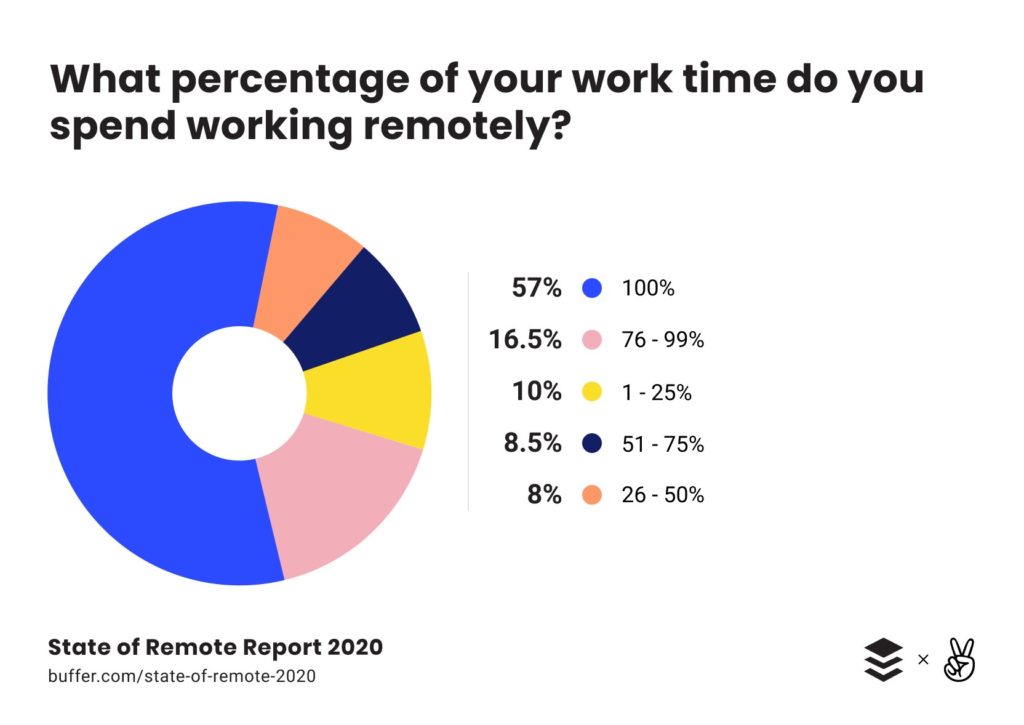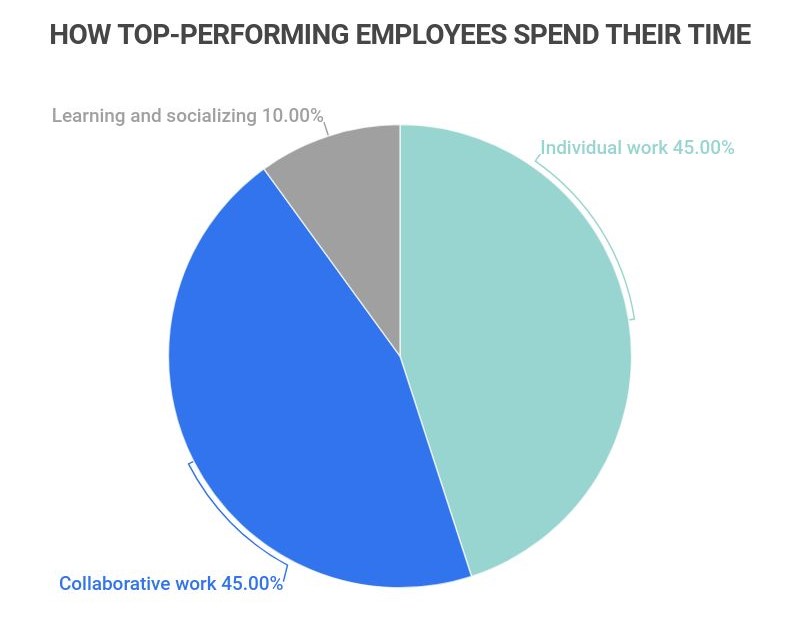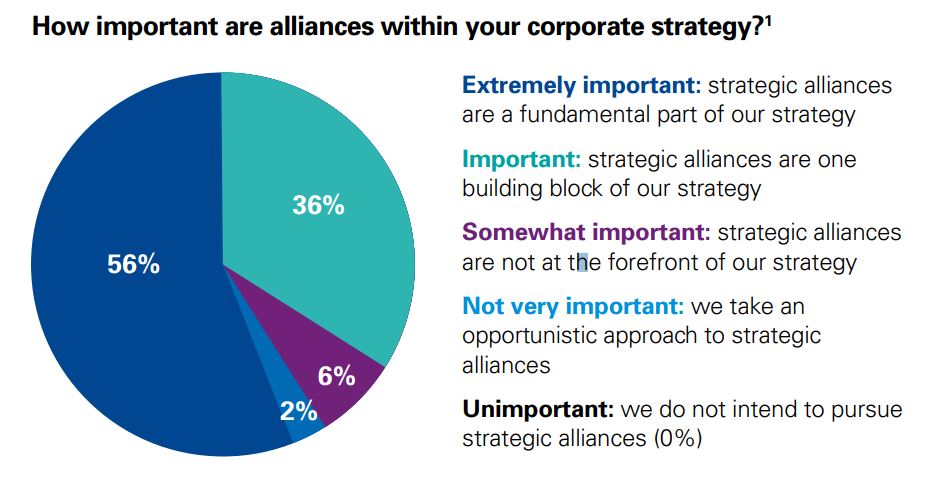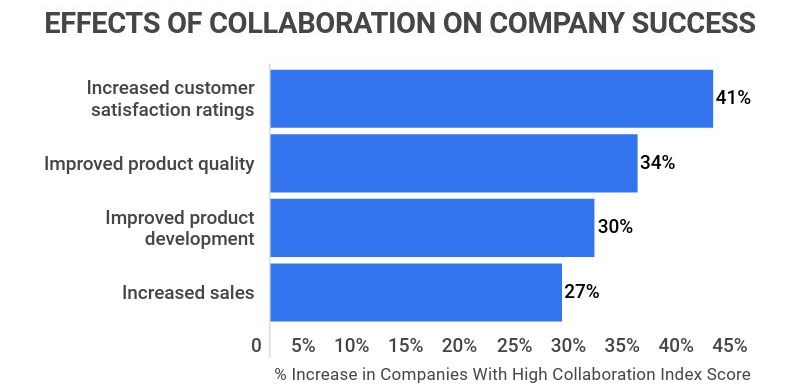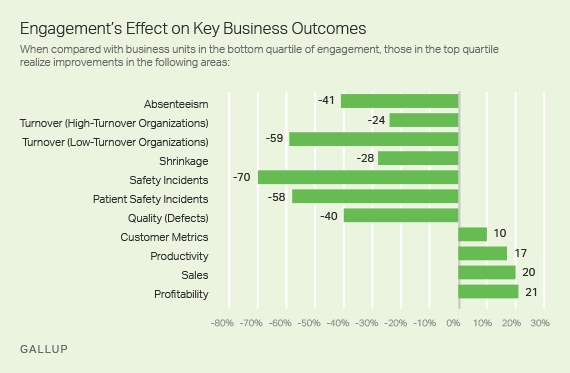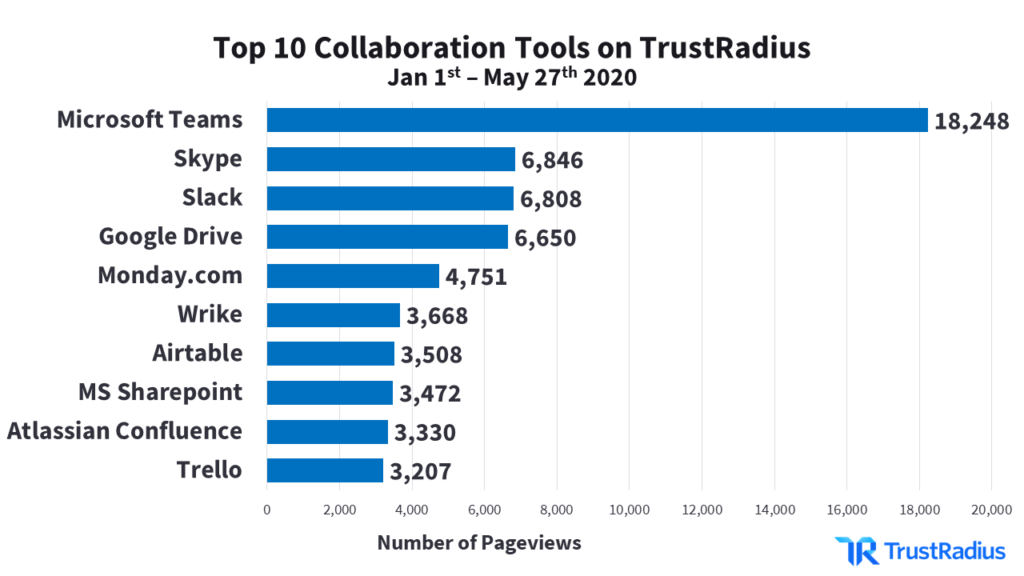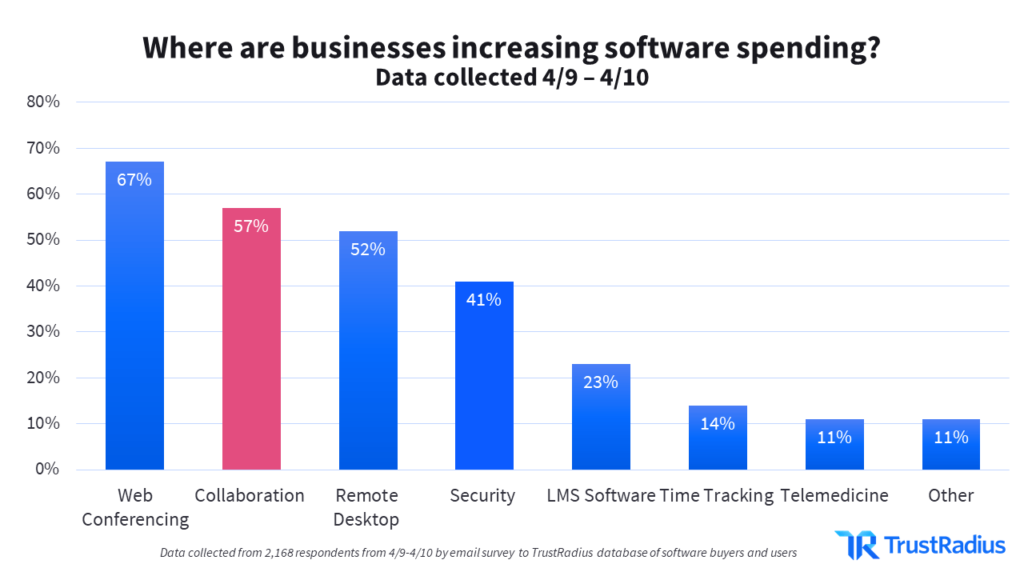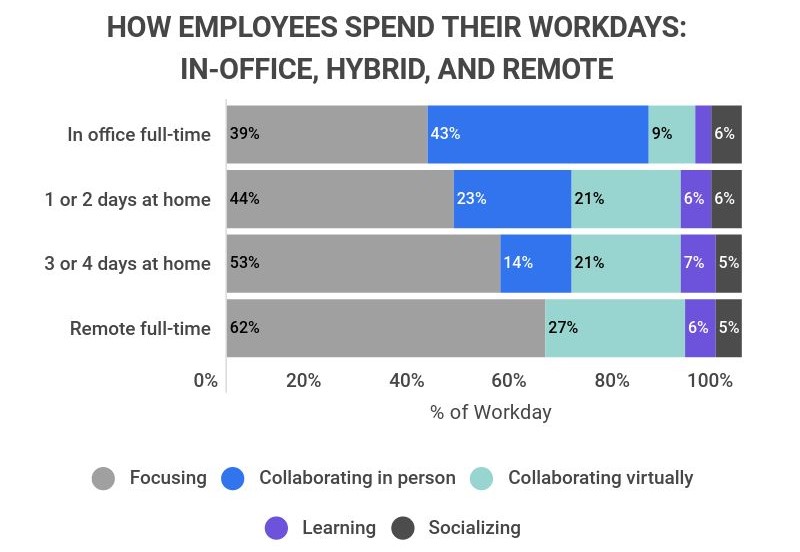Collaboration is a very powerful tool for growing your business. Whether it’s forming alliances with other businesses to meet common goals, or simply encouraging closer working relationships between your own employees, there are a host of positive impacts collaboration can have.
But what exactly is business collaboration? What forms can it take, and how can you make the most out of it? Let’s take a look and find out.
What Is Business Collaboration?
Collaboration is all about building connections. When it comes to business collaboration, this means working together with different groups of people, both internally and externally, in order to generate new ideas and solve existing problems. It can go a long way towards improving engagement, and output.
Modern technological advancements have made business collaboration more viable than ever. With remote working becoming an ever more popular option for workforces, online collaboration tools are extremely important in connecting employees wherever they may be on the planet.
Increased connectedness not only makes collaboration easier within the same organisation; it opens up new opportunities for different businesses, clients, and individuals to work together. External business collaboration helps companies meet shared goals, and inspire new ideas to meet shared goals.
Types of Business Collaboration
1. Internal
Internal business collaboration involves teams and individuals from within the same organisation working together to achieve a common goal. This could be on day-to-day tasks or working towards longer-term objectives. In some ways, internal collaboration is just a fancy way of saying ‘teamwork’.
As you can see from the chart above, top-performing employees spend just as much time collaborating with other employees as they do working on their own.
Internal collaboration can take many forms. It could be brainstorming ideas for a solution to a problem, drawing up mind maps at the start of a new project, or file sharing between colleagues to cover gaps in each other’s knowledge. Everyone in an organisation can benefit from collaboration, from customer support to the HR department.
For internal collaboration to function at its best, it’s important for team members to have a clear idea of the goals they’re working towards, and to have the soft skills to be able to effectively work towards them together. This means being able to communicate efficiently and effectively.
2. External
External business collaboration is the idea of teams working with others outside their organisation. This could be other businesses, consultants, clients, freelancers, or other stakeholders. External collaboration can take many forms:
-
Alliance
Alliances are perhaps the most traditional type of external business collaboration. A strategic alliance involves an agreement between two or more independent firms, with a view to sharing resources and information in order to solve a common problem or reach a common goal.
This could be done in order to fill gaps in the knowledge or resources of an organisation. Any agreements made are likely to be mutually beneficial, meaning that all parties have something to gain from the collaboration.
-
Portfolios
Portfolio collaborations are similar to alliances but are more likely to be between one large organisation and multiple smaller ones. The central managing business will usually set the groundwork, establish the rules, and maintain the collaboration.
In this way, a portfolio collaboration shares many of the benefits of a traditional alliance, but will usually be longer term. This allows for the continued sharing of resources and knowledge over an extended period of time, to the benefit of all parties. It also builds connections between a larger number of organisations.
-
Co-opetition
Co-opetition is the idea of building alliances with direct competitors. Although this idea may seem counterproductive at first, there are actually several benefits for the collaborators.
It allows organisations to avoid the duplication of work, saving time and energy when it comes to research and development. New customers can also be generated for all parties.

-
Community
Community collaboration simply refers to businesses working with others in their community. These could be individuals or other businesses. The community in question could be the local community or the online customer community.
An example of local community collaboration could be joining a local business partnership scheme. Customer community collaboration, on the other hand, could involve partnering with influencers on social media to promote your products.
-
Network
Network collaboration involves a group of businesses working together towards shared goals. The members of the network could be competitors, or could simply be linked by geographical proximity but will have some shared interest that makes collaboration mutually beneficial.
The businesses will exchange information and share resources across the network, allowing mutual access to each other’s resources and customer bases. It could also involve allowing other businesses to write guest posts for a company website, or even hosting podcasts on topics from a shared industry.
-
Ecosystem
A collaboration ecosystem is made up of long-lasting relationships between businesses. These relationships will often be more complex than those within a simple alliance, and will often be governed by more rules than within a network collaboration.
Businesses involved in a collaboration ecosystem will share many similar goals, and the targets for the collaboration will be determined by all parties, rather than by one leading organisation. The different parties will often depend on each other greatly for their shared knowledge and technologies.
Benefits of Collaboration
There are a wealth of benefits to be enjoyed by companies that collaborate. These can be both financial and technological and can benefit entire teams, the organisation as a whole, and also individual employees.
1. Inspire Your Teams
It can sometimes be difficult to find inspiration in the workspace, especially when you’re performing the same tasks and dealing with the same paperwork day after day. This means that employees will often fall into routine habits, and rarely try to find new ways of working. (If it ain’t broke, don’t fix it, right?)
Collaboration encourages the sharing of ideas and information, meaning that all of a sudden you’re exposed to new ways of looking at the workflow of your business that you may never have considered before.
Encouraging employees to share information reduces the risk of data silos forming within your own organisation, which may otherwise stall productivity.
2. Solve Problems
Sometimes the problems businesses face are straightforward and can be solved with little fuss. But there are other times when the problems are more complex, and may therefore need greater scrutiny to fix.
Collaboration gives you access to a greater number of minds to analyse and try to solve these problems. These extra pairs of hands will often be accustomed to solving different kinds of problems, using varying pieces of software, or will just have a fresh perspective. This means that they can quickly identify the solution to a problem that may have otherwise eluded your employees.
Not only this, but collaboration can stop problems arising in the first place. Alliances between different companies can eliminate the needless duplication of research and development, meaning that processes are streamlined and problems are avoided entirely.
3. Increase Engagement
Encouraging teamwork internally in your organisation is a great way to increase employee engagement. And increasing engagement is key to success, as it increases productivity and profitability while reducing staff turnover and absenteeism.
Research has shown that employees desire to feel like part of a team, and those that do so are more than twice as likely to be engaged at work than those that don’t.
This means that creating a culture of collaboration not only allows for the easy sharing of ideas and information but also boosts team morale. A survey of European workers found that they’re up to 20% more satisfied with the culture of their workplace when they have access to collaboration tools.
Making collaboration a company value shows all your employees, (as well as prospective employees), that teamwork is valued by your organisation, and you understand the value it has in productivity and employee satisfaction.
4. Save Time and Money
One of the biggest factors leading to budget overspends is delayed projects. By pooling knowledge and resources through collaboration, you can solve problems faster, and skip over others altogether, reducing development times and lessening the likelihood of delays.
Sharing information and resources with other organisations also gives you access to areas of their budget. For example, sharing research and development duties will reduce your workload, while having parts of it funded by other parties. This can be effective when it comes to marketing, too.
One of the key factors in a working collaboration is well-defined roles. By ensuring all parties know what areas they’re responsible for, you can share the workload more efficiently, and really speed up the completion times for projects. Tracking tools will allow you to see how far along in a project you are, and whether you’re meeting your targets.
This can be done effectively through Kanban boards, Gantt charts, and other project management tools.
How to Have a Successful Business Collaboration
There are several things to consider which will help your collaboration run smoothly.
1. Collaboration Apps
Using collaboration apps is a good way to increase the speed and efficiency that all parties can communicate and collaborate. There are a variety of mobile apps available for iOS and Android, many having gained prominence in recent times due to the increase in remote working. You’ve probably heard of Slack or Microsoft Teams. But what exactly do they do?
Simply put, collaboration apps give employees a centralised platform through which to communicate, on the mobile device in the palm of their hand. This could be to check on the progress of work, ask questions, assign tasks, or share files. Apps like these are great communication tools and streamline the process of collaboration.
Messaging functions in these apps provide a great way for multiple team members to communicate openly, all at once. This also provides a record of conversations for employees to refer back to at a later date if necessary.
Task management apps such as Trello are great for putting together a list of jobs that need to be completed. These tasks can then be assigned to different employees, ensuring everybody knows exactly what they’re working on, and eliminating the need for unnecessary duplication. The included automation tools can further help save time by streamlining the process.
If pricing is an issue for your company, many of these apps have free versions which work well, even though they may have limited functionality.
2. Collaboration Processes
A collaboration process is simply the methodology of using a unified digital platform for project management in a collaboration. Project management software centralises processes and provides a safe and reliable work environment for the project to take place.
These collaboration platforms are designed to not be reliant upon a specific individual or organisation. This means that even if one party becomes unavailable or leaves the collaboration, their previous input is not lost. It is also designed to not be reliant on several different applications, for similar reasons. This keeps projects operating smoothly without loss of information.
Cloud storage applications, such as Dropbox or Google Drive, are helpful in making sure information is accessible to all parties during a collaboration. Work completed or in progress can be shared with other parties with a simple drag and drop interface. This means that everyone who needs access has it.
3. Tools
There are a variety of tools available to make collaboration simple and seamless. As we’ve already discussed, collaboration apps are a great place to start when considering what tools to use to aid your collaboration. But there are other options available, too. In fact, 57% of businesses are increasing software spending to aid in collaboration.
Work management platforms such as Asana provide the perfect way for all parties in collaborating to keep up to date. One of Asana’s key features is the ability to see a detailed plan for what the collaboration is designed to accomplish, and what needs to be done to achieve the end result.
Video conferencing tools, such as Skype and Zoom, offer easy and cost-effective ways for teams to stay in touch during collaborations. One of the biggest advantages of a video conference is that many different parties can partake all at once, allowing for the free and easy exchange of ideas, no matter where on the globe your employees are.
This is often better for building relationships than communicating through asynchronous means, for example by email. Not only that, but the extra features available make collaborating on projects even easier. Information can be shown through screen sharing, or customisable meeting templates can be set up to cater to your collaboration’s exact needs.
The fact that these platforms also offer instant messaging is an added bonus, so employees can refer back to previous, important conversations. Notifications let employees know when they have new messages available to read, which they can then refer to at their own pace.
Collaboration software applications such as Gmail, Google Docs, Outlook or Evernote offer easy and accessible ways for multiple parties to contribute to documents. Project managers or editors can remotely access the work they have permissions for, allowing them to request changes or make suggestions in real-time, which can then be picked up by other parties remotely.
Google Sheets is a great alternative to Microsoft Excel, with the added benefit of being hosted in the cloud, allowing for collaborative work on spreadsheets. This can be useful for collating data from numerous resources, or even simply for resource management and time tracking.
Microsoft Whiteboard is another great tool, which enables you to set up virtual collaborative spaces. This allows you to set up checklists, brainstorm ideas, and share information with remote teams. It can see effective integration with Microsoft Teams through an API, (application programming interface), allowing employees to collaborate remotely, wherever they may be.
4. Engagement Metrics
There are a variety of KPIs you can use to measure the success of a collaboration. Profit, customer satisfaction index, and client retention rate will all tell you whether your collaboration has been worthwhile. But in order to measure the effectiveness of collaboration while it is underway, you must assess how well your employees are performing.
Measuring project schedule variance will tell you whether your project is being completed in the timeframe you set out. By setting deadlines for specific goals within your project, you will be able to assess whether the collaboration is running ahead of, or behind, schedule, and by how much. This can be especially helpful if you’re utilising agile sprints to complete projects rapidly.
The employee engagement index will tell you how connected your employees feel to their work and their employer. This is again measured by surveying recipients, and can be measured on a scale ranging from ‘not at all engaged’ to ‘very engaged’. Happy and engaged employees are more productive, so it is always worthwhile measuring the satisfaction and engagement of your workforce.
5. Collaborative Culture
Establishing a collaborative culture in your workplace ensures that all your employees understand that collaboration is not only allowed, but encouraged. It also helps them to understand what’s required of them when it comes to collaboration, and what processes they should follow to ensure that their collaborations are successful.
As you can see from the chart above, facilitating collaboration should be important to businesses whether their workforce is based in the office, remotely, or a mixture of the two. All employees spend a large chunk of their time at work collaborating, whether it’s in person or virtually.
Building a workplace that values, trust, transparency and the sharing of knowledge are all paramount to fostering a collaborative culture. Ensuring that employees have access to the right team collaboration tools is also important. Even something as simple as a group chat with your colleagues encourages collaboration.
6. Incentives and Rewards
One of the best ways to encourage meaningful collaboration is to incentivise it. By rewarding collaborative behaviour as well as individual performance, you can ensure your employees value the success of their teams as much as their own success.
Rewards could be financial, such as basing part of an employee’s bonus on how well they’ve collaborated with other employees. Some companies offer rewards that are non-financial, such as free gifts at the completion of projects.
Collaboration Ideas That Will Help Businesses Grow
There are several steps you can take to ensure your business is forming a culture of collaboration. Here are a few ideas for activities to get you started.
1. A Wiki
A wiki is a shared online space that can be edited and added to by users, then viewed by people inside or outside your organisation. It’s a great way to share knowledge and makes a useful reference tool both for new hires to your company, or outside organisations that you’re collaborating with.
2. Cross Promoting Collaboration
Cross promoting involves using your platform to advertise the goods or services of other businesses, with the business usually returning the favour. This could be through sharing their posts on social media, hosting blog posts they have written on your website or running partnered promotions for their customers.
3. Networking Events
Attending networking events is possibly the best way to make connections with potential collaborators, especially if you’re an upcoming or small business. But there’s no need to stop there. You could even consider hosting your own networking events, perhaps in collaboration with other businesses.
These events could be held in-person, or even online in the form of webinars, virtual conferences or video calls. This is a great way to discover new clients and generate buzz around your brand. It also provides a great way to keep in touch with stakeholders.
4. Community Events
Similarly, attending community events is another great way to get your business noticed. Community events will often attract other businesses with similar interests to yours, opening up new collaboration opportunities. These kinds of events can be especially useful in building relationships for those who may have set up a small business at home, or are working remotely.
Wrapping Up
It’s no secret that the world of business is changing rapidly. We’ve established how important collaboration is, and it’s clear that those companies who don’t embrace it could well start to fall behind.
There are so many helpful tools available to help streamline the collaboration process, both internal and external. It’s really never been easier to forge lasting relationships that will help propel your business forward and keep it profitable for many years to come.
Originally published 28 Mar, 2022, updated 13 Jan, 2023


